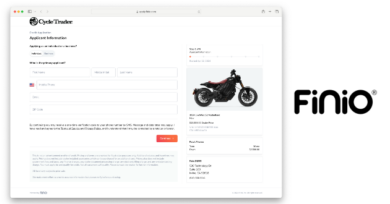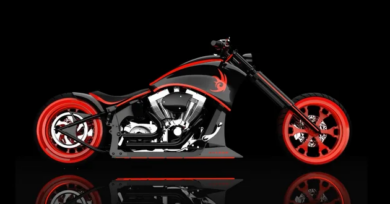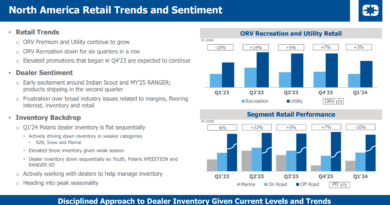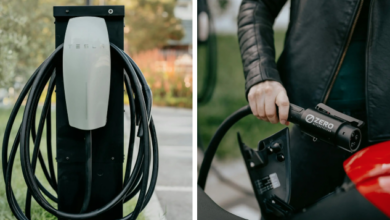Feb. 9, 2009 – Toy law could prevent sale of youth vehicles
By Mike Davin
Contributing writer
New federal legislation designed to regulate the level of lead found in toys could have an impact on the sale of youth dirt bikes and ATVs unless the vehicles are granted an exemption from the rules.
The law requires all consumer products intended primarily for children ages 12 and younger to include less than 600 parts per million lead. According to manufacturers, the youth models of many powersports products might exceed those limits in parts such as aluminum brake components and battery terminals.
As a result, OEMs have sent letters to their dealers informing them that, barring intervention by Congress or the Consumer Product Safety Commission (CPSC), sale of these vehicles will become illegal starting Feb. 10.
Rick Pawelka, marketing and communications manager for KYMCO USA, says KYMCO dealers have been advised to remove their youth ATVs from the sales floor on Feb. 10 until the situation has been resolved or KYMCO can show complete compliance.
The CPSC announced on Jan. 30 a one-year stay of testing and certification requirements for certain products, which is designed to relieve smaller manufacturers of substantial testing costs. However, the stay does not relieve them of complying with the underlying requirements dealing with lead, phthalates and other standards.
CPSC spokesman Joseph Martyak says the stay does not mean powersports manufacturers have another year before they must comply with the 600 parts per million limit.
“That’s what Congress wrote, and we can’t change that,” Martyak said.
The Specialty Vehicle Institute of America (SVIA) and the Motorcycle Industry Council (MIC) sent letters to the CPSC on Jan. 26 asking for a temporary exclusion from the lead limits while the commission considers exclusions to the law.
The petitions seek a temporary exclusion from the lead limits for four classes of materials: brass/copper alloys, aluminum alloys, steel alloys and the lead in battery terminals. All of these classes of materials have been exempted from the European Union lead standards for motor vehicles, according to the MIC and SVIA.
Both letters are signed by Paul Vitrano, who serves as general council for the MIC and SVIA, and contain similar language. Vitrano said in the letters that the groups will seek relief only for “parts that are highly unlikely to be contacted by children at all, much less contacted in a manner that could result in measurable increases in lead in children’s bloodstreams” and only for functional, not decorative, parts.
The groups also sent letters to Sen. Barbara Boxer of California, who sits on the Congressional Subcommittee on Consumer Affairs, Product Safety and Insurance. The letters note that a significant portion of the powersports industry is based in California and ask Boxer to contact the CPSC about granting a temporary exclusion before Feb. 10. Similarly, Honda urged its dealers to contact their Congressional delegations and senators to help ensure small motorcycles and ATVs are exempted from the lead-content provisions of the law.
In January, the CPSC published proposals relating to the process of excluding specific products from the requirements and the possible exclusion of certain electronic devices. However, the public comment period for those proposals lasts until Feb. 17, which the MIC and SVIA say makes it impossible for their members to obtain an exemption before the ban takes effect.
“Granting the petitions for temporary exclusion will allow your staff the time it needs for a thorough review of the public comments filed in response to the four proposals, and an orderly completion of the rulemakings, consistent with the requirements of the Administrative Procedure Act,” Vitrano said in the letters.
In a letter to Congress that addresses concerns about the law and its implementation, CPSC Acting Chairman Nancy Nord suggests that some issues associated with the law must be addressed by Congress, writing, “The act gives the agency neither the flexibility nor the resources it needs to deal with many of the problems referenced in this letter. Consequently, addressing these issues should be a priority of the 111th Congress.”
The Consumer Product Safety Improvement Act, which contains the lead provisions, passed with huge bipartisan support in August partially in response to reports that toys containing unsafe levels of lead were being imported from China. In August, it will become even stricter, reducing the level of lead allowed in children’s products to 300 parts per million.
For updates on this ongoing issue, see powersportsbusiness.com.




